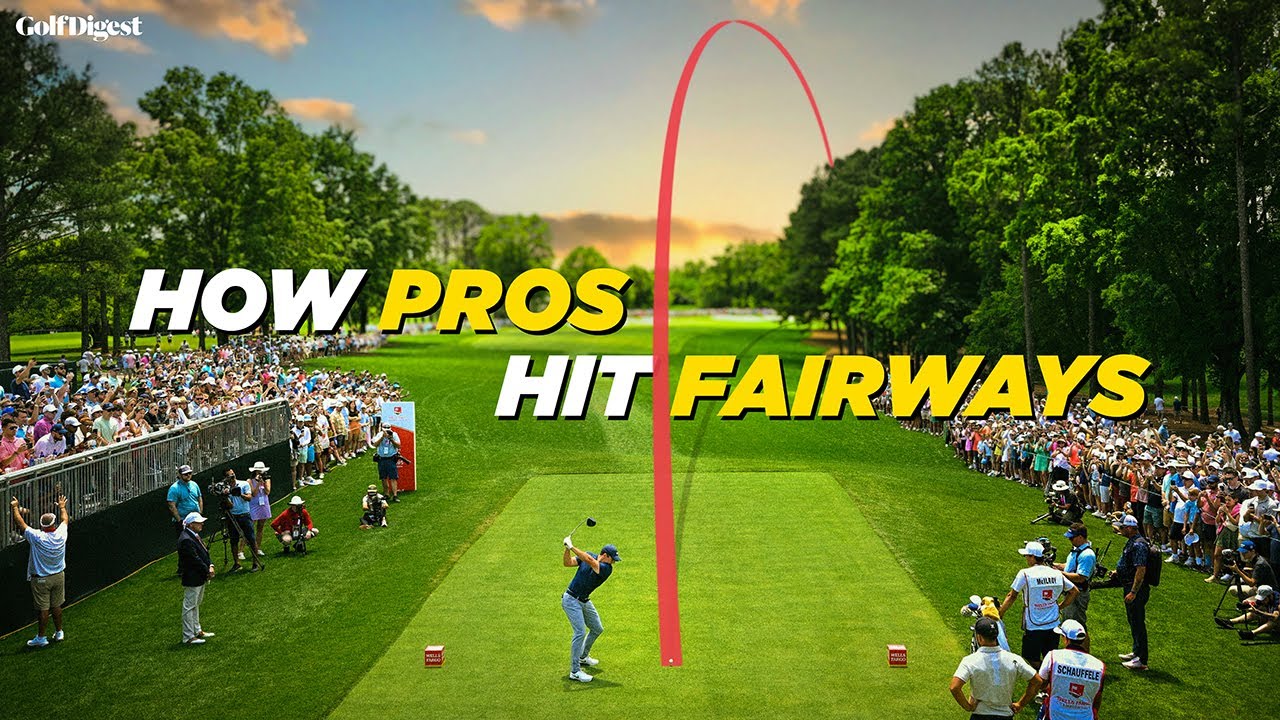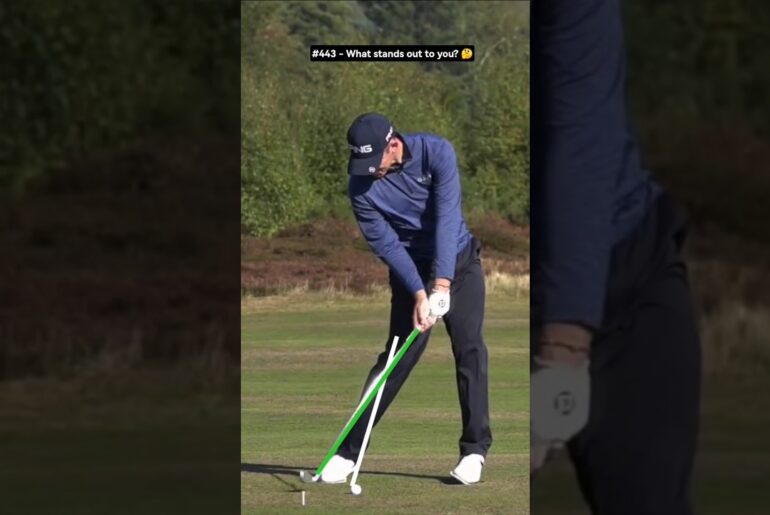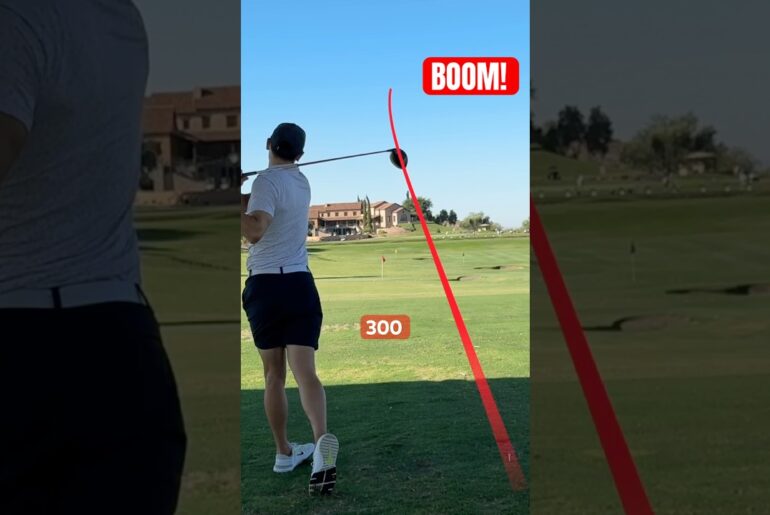Ever wonder why PGA Tour pros seem to hit every fairway, while your driver gets you in trouble way too often? The numbers don’t lie: 10–15 handicaps hit their driver into trouble 22.6% of the time. The pros? Just 0.3%!
In this episode of The Game Plan, Golf Digest Senior Editor Luke Kerr-Dineen breaks down how the best players in the world approach driver strategy—and what amateurs can learn from them. From tee heights to shot shapes and course management, you’ll get practical golf tips to help you hit more fairways and lower your scores.
Whether you’re struggling off the tee or just looking to play smarter golf, this is the driver strategy video for you.
👉 Subscribe for more golf tips, course strategy, and data-driven insights from The Game Plan.
Have you tried any of these driver strategies? Let us know!
Like, Subscribe and Comment with any questions or ideas for future episodes!
Follow GolfDigest:
Instagram / golfdigest
Twitter https://x.com/GolfDigest
Subscribe to Golf Digest on YouTube ►► http://bit.ly/golfdigestyoutubesub
Grab a Golf Digest + membership ►► http://glfdig.st/mFqM50OXuv4
ABOUT GOLF DIGEST
Home of the Hot List, Golf Digest +, news and trends, Golf Digest is the definitive destination for all things golf.
Host: Luke Kerr-Dineen
Producer & Video Editor: Ben Walton
Executive Producer: Christian Iooss
Chapters:
0:00 Intro
2:02 The “Swing Soft / Swing Hard” Mistake
4:32 The Bullet & The Bomb
8:50 The 65-Yard Rule
11:56 Verdict
What we’re looking at here is a stat, maybe the most important stat in golf. It’s a stat that for most of us is the biggest drag on our handicaps. It predicts the number of blowup holes that we have as we play. And in many ways, it’s the stat that measures the source of our frustrations on the golf course. This is the number of T-shots that golfers hit into trouble. Aros measured this and found that 10 to 15 handicaps hit Waywood drives about 23% of the time. 7% of the time their drives go out of bounds or into a hazard and another 16% of the time they end up in trees or in deep bunkers. And this happens one of every four drives that they hit. And even scratch golfers aren’t that much better at avoiding this mistake. They hit one or two drives out of play every single round. But pros are great at this. You know how many drives they hit into hazards? On average, 0.3. That’s less than one every three rounds. This really matters. This is where our double bogeies and blowup holes come from. The better we get at this, the better we get at golf. I wanted to figure out how pros are so good at this. What are they doing that the rest of us aren’t? So, I went down a rabbit hole. I analyzed a ton of Rory’s driving data and did some reporting. What I discovered was a kind of three-part strategic approach, all designed around getting their drives in play. And if you have all three parts, you’re going to get more drives in play and shoot lower scores because of it. So, we’re going to explain each part. And yes, pros do have better golf swings than the rest of us, but they also have better strategy. They pair the right shot with the right moment. And while you may not be able to copy their swing, you can use their same smarter game plan. Okay, so the first part of this driving strategy is avoiding this swing soft, swing hard mistake that a lot of us amateurs make really often. On some holes, we sense a reachable par five and our eyes get really big. We wind up and we swing way too hard trying to squeeze every yard we can out of our drive and the ball just goes sideways because of it. But then on tighter holes, we try to ease way off it and we make these guidy, uncommitted swings that don’t actually end up much better. I’ve actually been asking golfers this a lot recently, even on Twitter, and 57% of people said that they try to swing closer to 80% when they really want to hit the ball straight, but they swing closer to 95% the rest of the time. This is the swing hard, swing soft trap that we fall into, but pros are really good at avoiding. We send it off the tea when we can’t and then try to guide it off the tea when we shouldn’t. And pros don’t really do this at all. They’re way more consistent. But this isn’t really true for amateur golfers because according to Aros, a five and 10 handicaps big miss percentage and penalty miss percentages actually goes up on par fives compared to par fours. In other words, we hit a lot more bad shots when we’re trying really hard to hit good shots. I first became aware of this when I developed this stat I’ve been calling power percentage, which measures how close a player’s average driver ball speed is to their maximum ball speed. Almost all pros pretty much live around 95%. For example, here are all of Rory’s drives from the past two seasons. When you look at the spread, there’s just not that much difference in ball speed from his fastest and slowest drives. Almost 90% of his drives were within 95% of his max, and the ones that weren’t were probably just mishits because the swing speed only varied a couple miles an hour. If you’re trying to speed up and slow down your golf swing based on the hole, you’re doing it wrong. It’s like you’ve got three different golf swings, but you should really only have one. It’s why pros are pretty much trying to make exactly the same driver swing off the tea every single time on every single type of hole. But that doesn’t mean they hit the same shot every single time. Which brings us to part two of their driving strategy. The bullet and the bomb. So, every pro does this, but they all have slightly different names for it. The bullet and the bomb is how Daniel Burger said it when I asked him about it, which I thought just sounded great. So, let’s go with that. How often are you like, generally speaking, stepping up on a tea and saying like, “Okay, I’m going to go 100% full throttle with this driver.” Like, how often does that kind of happen? Very, very little. I mean, probably three times around. What’s helped in my game is I have two different kind of shots. I have the what I call the bullet which is like a really kind of low shot that’s a fairway finder and maybe three or four times around like on a par five where I it’s an advantage to you know be able to reach it or a bunker that I need to carry on a couple holes I’ll do that. A lot of other players just say something more simple like high te or low te like Denny McCarthy does here. Typically for me, when I tee it high, I I see draw. Um, helps me swing up on it and turn it. And when I tee it low, it just naturally kind of helps me um, hit that squeeze cut. Either way, that’s the general strategy, not to adjust your swing too much, but to adjust the tea height and hit different shots that way, like Tiger Woods, who literally uses two different types of T’s based on the hole he’s playing. a 2.1 in T and a longer 3.3 in T. So the draw was up there. So try and get that as much of the ball as possible above the crown. If I want to hit one low and cut it, I try and get most of that ball below the crown. That’s like a perfect cut for me. And outside of the anecdotes, you can see this in Rory’s data, too. Again, when you analyze all Rory’s drives over the past year and a half, they fall into three main clusters. He has a highte max carry drive, which apexes at 130 ft and goes about 330. That must be nice. He has his stock drive, which apexes around 120 ft, launches at 10.5°, and goes about 315. And his low one, which launches at 7°, and apexes under 80 ft. It’s an awesome shot when he really gets after it. And I actually asked Rory about this at the open last year. Rory, you’ve hit this shot off the tea a few times this season, this like ultra low drive. I’m just wondering if that’s a skill you’ve always had, if you’ve had to develop it over the years, how often you practice it. I mean, where does that shot come from? I’ve talked about my sort of low tea and my high tee. You know, I tee it down low, which helps me keep on top of it and keep that right side high. If I tee it up a little higher, I can get it some right side bend going. And like 12 at Pinehurst was a was a was an example. So to just get the ball on the deck and get it running, especially on fairways like that, it’s been a nice go-to when when I’m struggling to see a certain shot, just take it to it low and and sort of squeeze one out there. And you know, it still go gets out there quite a long way, which is which is nice. Again, notice how the average ball speeds on each of these drives are really similar. They’re three different shots, but it’s basically the same swing each time. It’s the different tea height that’s the big thing creating these big differences. And yes, you are good enough to do this. We tested this a few months ago with amateur golfers, and the same results held true. The high T drives go further but spray more, and the low T drives go shorter, but stay straighter. You don’t have to change setup. You don’t have to change anything. Same swing. you’re just making a different impact location contact. If you need to control the ball or let’s say it’s windy, you hit the ball down low on the face, you’re going to spin the ball more. Spinning more creates more control. Now, let’s say the wind’s behind you and you’ve got two fairways wide open. Tee that ball high and you are going to maximize distance. Same swing, same energy, but you will get completely different results. It is the easiest tack in the business. This is the breakdown of how often Rory uses each of those drives. And again, he doesn’t change how hard he swings to create these shots. It’s just a tea height thing. These are the basic tools that good players use off the tea. And part three of Proz’s driving strategy is knowing how they use them to avoid bottlenecks. So, while us amateurs tend to swing hard on long holes and try to guide it on short holes, pros abide by something that can kind of be described as a 65 yard rule. It’s a rule of thumb invented by Scott Faucet, the genius founder of Decade Golf. In a nutshell, it means that if there are 65 yards of fairway or rough between penalty hazards, then this is as good as it gets. There are no bottlenecks in sight worth worrying about. So aim between the two hazards and hit your stock drive, not our swing for the fences drive. This is our stock drive scenario. But most holes don’t have penalty hazards far away from each other evenly on both sides. Often you’ll see a penalty hazard like out of bounds on one side and a non-penalty hazard like trees or a fairway from another hole on the other side. These are kind of half bottlenecks. Probably the most common move here is to aim your stock shot away from the penalty hazard towards the trees in this case. Basically, so you’re playing around the bottleneck instead of through it. You see this happen a lot on Quail Hollow’s 18th hole with a stream down the left and trees and bunker down the right. And a lot on TPC Sawrass’s 18th hole. Yes, it may end up in the trees, but your ball is in play. So overall, you come out ahead. We did a whole video about this hole, which if you’re interested in, you can check out right here. Lots of holes use two bunkers that pinch the fairway in. Fairway bunkers aren’t penalty hazards like water, but they can still be really painful if you get stuck in them. This is a more severe bottleneck. And the thing to remember here is that when in doubt, you should try to go over the bottleneck. Take it out of play that way. It’s why pros call on their high tee max carry shot a lot in this situation. But if you can’t reasonably go over the bottleneck, then you got to go through it. This is a good time to use your low tea driver, which again stays a little straighter even though it goes a little shorter. This is also a great example of why long hitters tend to play really well at a place like Quail Hollow because they can hit their max carry shot when other players have to opt for their low shot. Both sets of players are making the right call for them. But if you can go over stuff, it’s just such an advantage that’s really hard to beat. Just look at how Rory won on Sunday last year. He hit his max carry drive over the trouble on the first hole, then over everything on eight, then again on 10, and again on 16, and finally on 18. The closing stretch at Quail Hollow is one of the most difficult in golf, and Rory was hitting his max carry T-shot everywhere. And finally, if the fairway pinches to 40 yards or less, and you can’t carry the stuff that’s pinching it, that bottleneck is too narrow, even for your low driver T-shot. Scott says, “In these situations, it’s probably time to hit a different club, like a 3-wood or a hybrid.” Now, notice how in none of these situations have we talked about whole length, which us amateur golfers can get obsessed over. When you’re designing a strategy to get off the tea in a smart and safe way, swinging really hard on long holes and trying to guide it into the fairway on shorter holes just isn’t the best way of doing it. the pros show us how to do it the best way, and that’s to try to keep the speed of your swing the same on pretty much every drive. Outside of that, it’s to make a couple of simple tea height adjustments that can create the three different kinds of shots you need. And after that, it’s to pick the right spot to use each of them based on the effective width of the hole, not the length of the hole. That’s the blueprint that pros are showing us. Making fewer big numbers and blowup holes. It’s just a steady diet of good decisions, having a few basic tools, and really not trying to do too much. Do it for a bit, and you’ll find that getting more drives in play might even be a little simpler than you think. All right, guys. Thanks for watching. I hope you liked it and learned something that maybe you can take to the golf course. If you haven’t already, like and subscribe to the Golf Digest YouTube channel. The game plan and my golf swing series film study come out every month and we’ve got a ton of great stuff in between. Leave any questions or episode suggestions in the comments below and we’ll try to get to it. See you next time.








4 Comments
I’m so guilty of the swing hard / swing soft mistake 😂
Thanks for watching guys!! U.S. Open coming up, so any episode suggests you’d like to see, let me know!! – LKD
Fascinating … and really useful 👍
pretend not to aim the fairway 😅